► VW California camper tested
► Driven at Norwegian Arctic Circle
► Not cheap: this one costs £54,771
Camper vans such as the Volkswagen California can’t simply be road tested – they need to be lived in. And while most reviews will be undertaken in a picturesque part of easily-accessible Devon, CAR likes to take things a bit further afield.
So what better place to test if the California is a genuine home-from-home, or simply an overpriced Transporter with a bed in the back, than the Norwegian Arctic Circle? In winter. If anywhere can roll a week’s holiday in Britain into a breakneck two-day road trip, surely it’s this place. Read on for the full VW California review verdict.
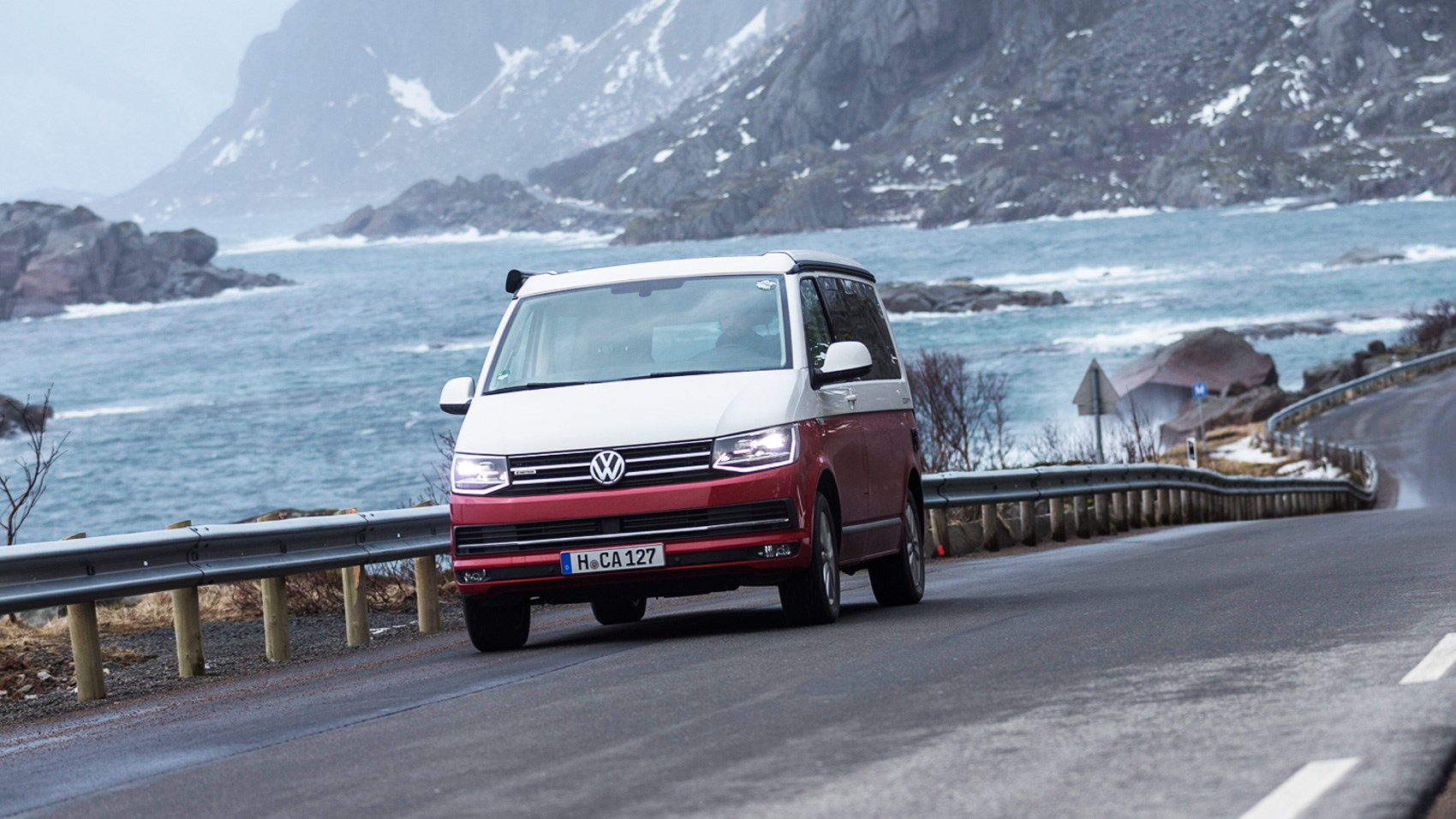
How easy is it to use?
‘The weather is too severe. We’re stopping here’…
Day one of the voyage and our 10-strong California convoy had ground to a halt in a cave-like tunnel just minutes from our night-time stopover in Unstad – a tiny village in the Lofoten Islands, 870 miles north of Oslo. We needed to get the folding beds in place but knew it can be done far easier from outside the van with the side door open.
Trouble was, exposing our mobile bedroom to the freezing Arctic gale blowing outside was a consequence we’d rather not face. Setting up in the shelter of the tunnel was our best bet – but we needed to be quick. Confused-looking locals were queuing up to get past our hastily-parked campers and the storm beyond was getting worse.
Lucky then, that the job of converting our Californias from living room/kitchen mode into a boudoir was nearly as simple as folding the rear seats down in a VW Golf. Slide, yank, flip and fold – voila. A memory foam mattress with enough width for two adults or three kids.
That’s not all: a rear cupboard and wardrobe (complete with hanging rail and mirror), plus a cool/warm box, a working sink and two fully-functional gas hobs, all of which could be put into action with less than a minute’s preparation. Impressive.
The camper had passed its first ease-of-use test. And not a moment too soon. The small queue of local traffic was growing and the otherwise friendly locals were losing their sense of humour. Would we have time to knock-up a quick gourmet dinner in the tunnel? No – as the sound of a car horn echoed around the tunnel, we scarpered.
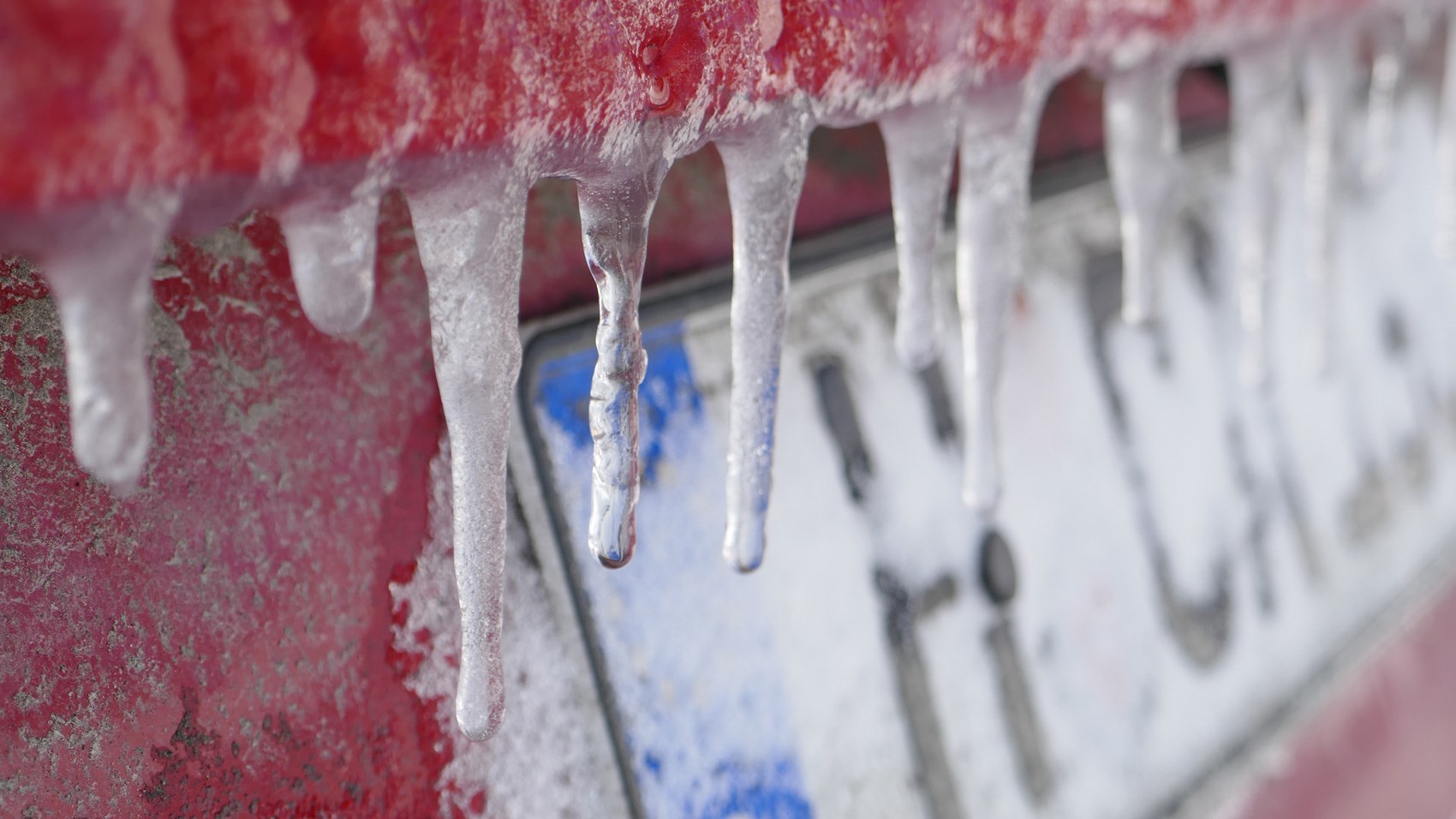
Is the California interior comfortable?
Safely parked up at the campsite with our sleeping arrangements in place, we set about fiddling with one of the California’s most welcome bits of kit – the electric heater.
Standard on California Ocean models, it’s programmable to seven different levels of warmth and runs off one of the California’s leisure batteries. Hot air comes through a number of vents positioned around the cabin, and will work so long as there is charge in the battery.
We were told by our guides to set the heater no higher than level three – otherwise the cabin would get too hot and we’d endure a miserable night. Instead, however, we whacked it up to seven and left the vehicles to grab some food, convinced that our guides were wrong and had become desensitized to the asphyxiating Norwegian weather.
As it turns out, they weren’t wrong. Opening the door on our return was akin to taking one’s head out of the freezer and into the oven. Quite what sort of conditions Volkswagen had in mind for the highest four levels of the California’s heater we’re not quite sure, but suffice to say it worked.
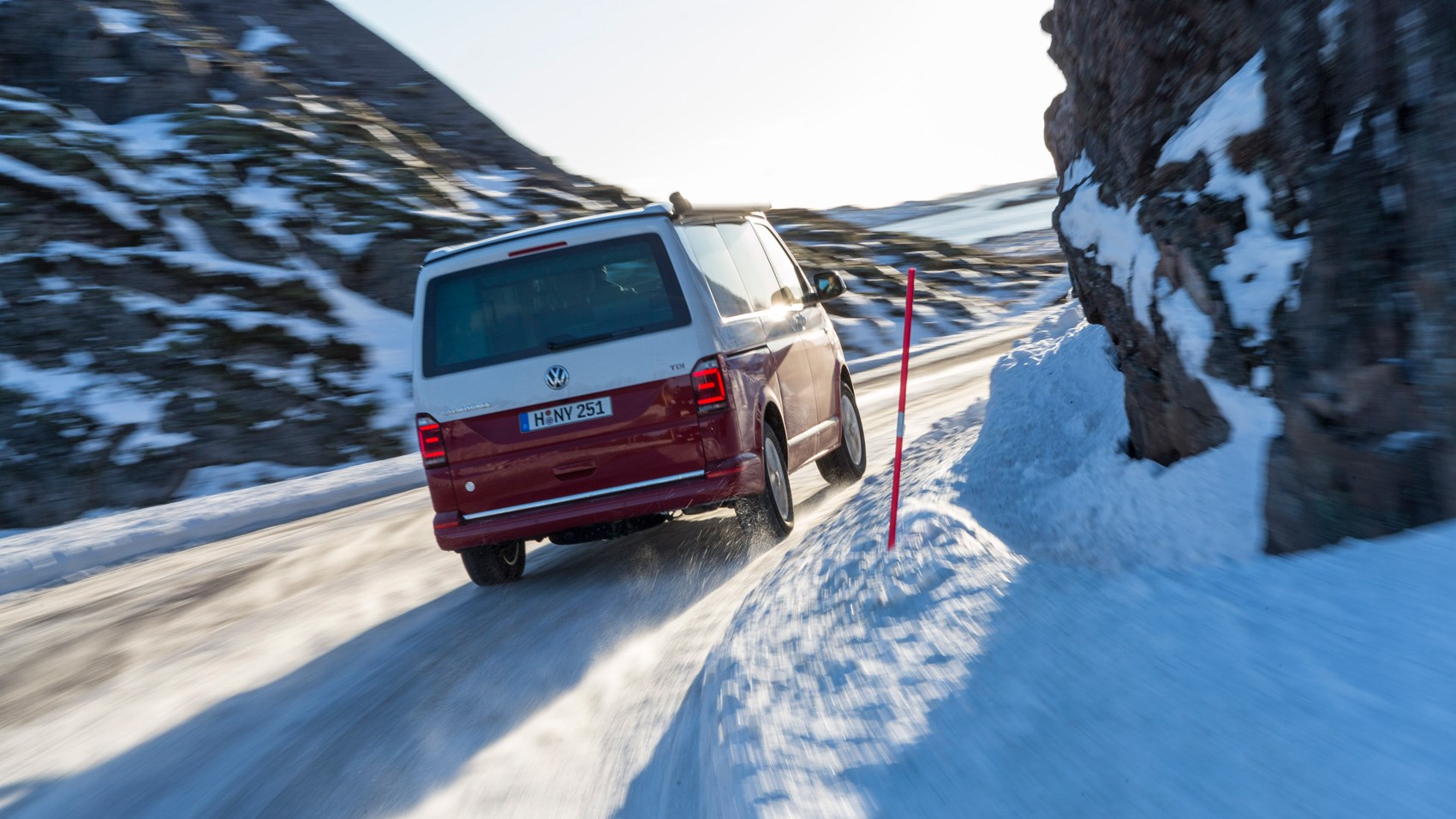
Does it drive well?
We awoke from a toasty night’s sleep as the temperature inside our Californias levelled out to pleasant Mediterranean glow. On our right sat a sheer cliff face stooped over our snow-laden campers, while the view straight ahead was a broad coastline pummelled by rolling waves – Unstad being home to the world’s most northern surf school.
Beautiful as it was, we had to move on. Our day’s mission was to drive our Californias from the camping spot in Unstad, to Offersøy via the fishing town of Henningsvær. A journey of 126 miles with a total driving time of around 3 hours 20 minutes in normal conditions.
Except these would not be normal conditions, with a thick layer of tightly-packed snow and ice lining every inch of the route. If our California could cope with this then a grassy campsite in Britain should be no trouble.
We did have a cheat on our side, however. Our California came decked-out in studded winter tyres, not exactly suitable for British roads but perfect for rural Scandinavia. We didn’t have four-wheel drive but the amount of grip on offer was deeply impressive. It didn’t, however, equal invincibility.
It sounds obvious but we were always driving around on tippy-toes despite the tyres’ sure-footed feel. There was enough grip to enter bends at a reasonable speed, yet any rushed or over-zealous prods of the accelerator or spins of the steering wheel were greeted with a pang of regret and a disconcerting floaty feeling from all four wheels.
While some vehicles trick you into thinking adverse driving conditions are no match for their abilities, the winter-tyre-clad California kept us honest throughout the entire trip. Infallible? No. Capable? Yes.
What engine does this VW Camper have?
The 201bhp 2.0-litre TDI engine was another pleasant surprise. More refined and smoother at speed than a diesel Golf, there was plenty to like about the California’s modest but progressive levels of power, and fuel economy nudging 30mpg was a decent return.
Sure, it didn’t feel fast but the 331lb ft torque output offered more than enough punch for overtaking lorries even on the narrow Norwegian country roads.
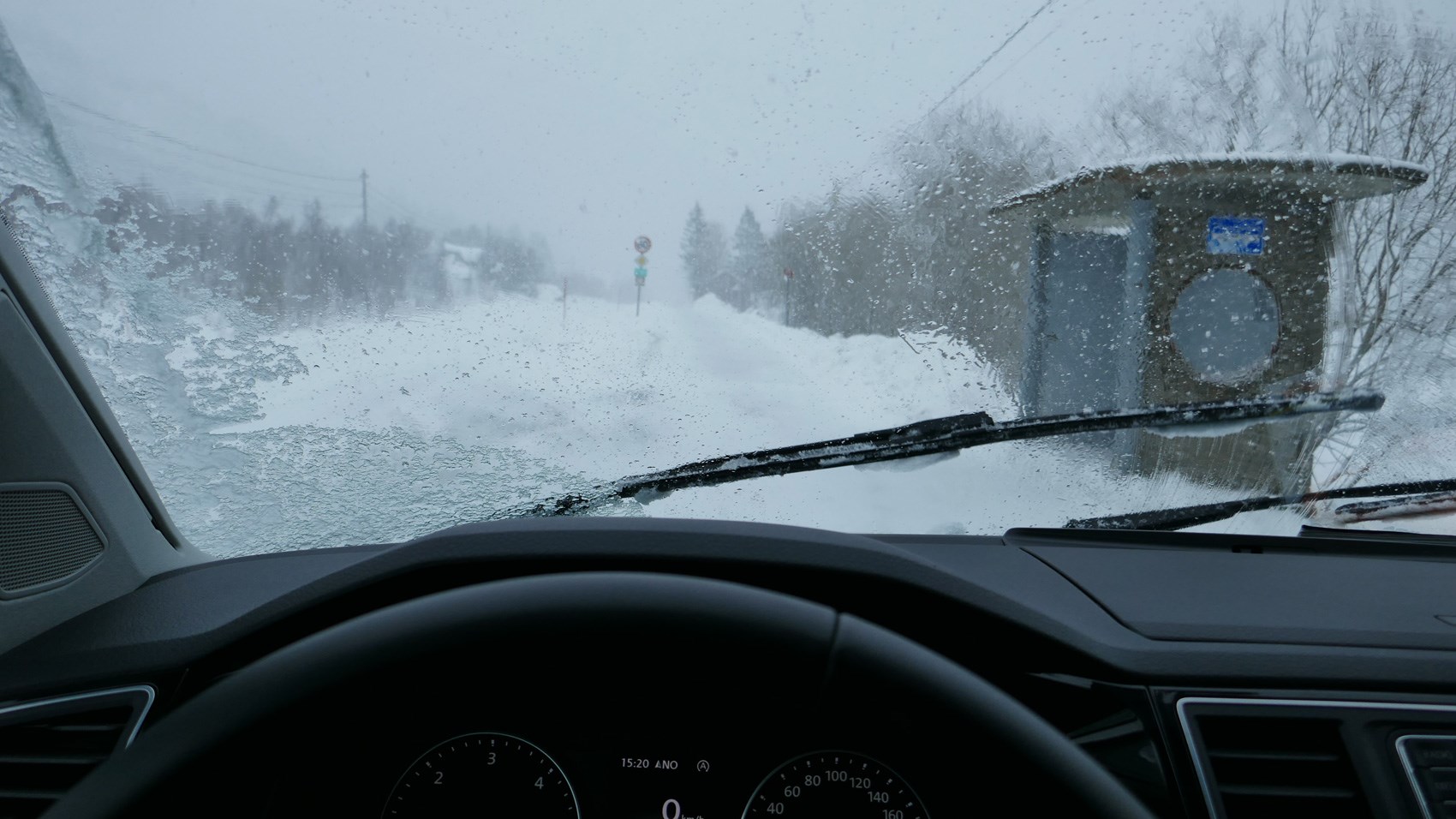
What’s the equipment like?
I’ve already mentioned some of the most interesting mod cons, including a stove and fridge, but what of the other gadgets? Cruise control, three-zone climate control, sat-nav and DAB digital radio are all standard on Ocean spec vehicles.
What isn’t standard, however, is the exceptionally useful heated front windscreen. Driving past the picturesque bay of Hanøyvika just over an hour from Offersøy we came across a slow-moving lorry and cautiously went for the overtake.
Gently squeeze the throttle, don’t let the gearbox kick down and keep the wheel straight and true. We drew alongside and were nearly past – but then a lump of snow fell off the lorry and shattered across the California’s windscreen. The wipers stuttered and groaned. They were frozen stiff to the glass. After a hasty piece of braking our camper sheepishly retreated back behind the lorry and came to a halt – still blinded by debris. Cue much fumbling for the de-icing spray…
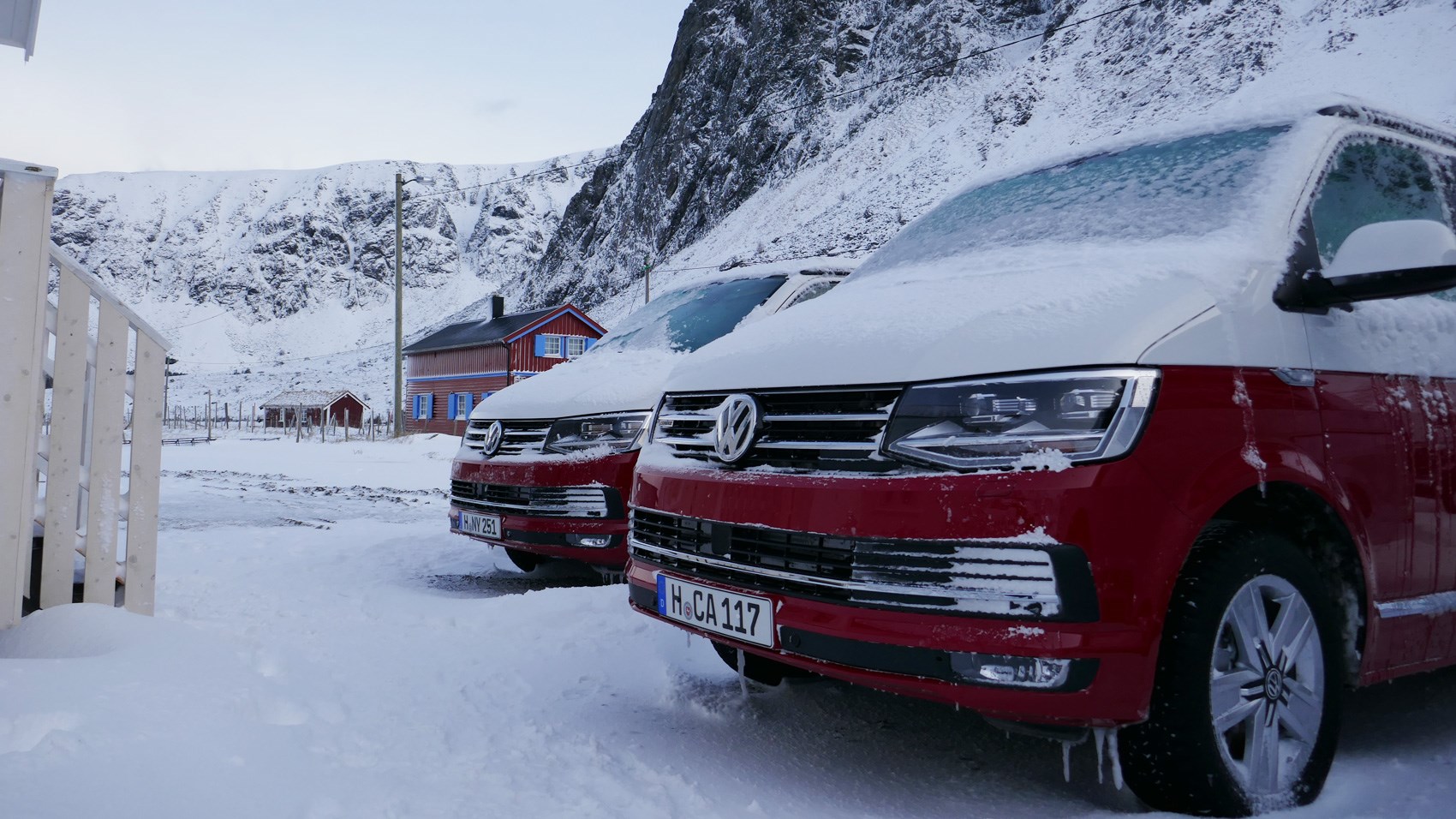
Could I really live in one?
Our trek to Offersøy finally complete, we took shelter in the camper’s pop-up roof area and watched as the sun dropped below the horizon of the archipelago, contemplating our time with the California.
For us, it was the little things that made it a capable companion and genuine home-from-home on our trip across the Arctic Circle.
The rear cupboard doubled up as a handy bedside table for phones and wallets, while the Bluetooth connectivity meant we could use the infotainment system as a mobile hi-fi. The front seats, too, swivel around like chairs belonging to evil villains in Bond films, turning the California’s cabin into a makeshift lounge.
Living in one would be pushing it. But a long holiday – absolutely.
Verdict
Camper vans have always been cool, but not until now have they been so civilised. The California is comfy and spacious, full of well-packaged gadgets and absurdly easy to drive.
Whether you’re on your own or have a family of four, it can take you to the depths of Devon or the icy mountains of the Arctic Circle. The age-old adage that you can live in a car but can’t drive a house has never been so accurate.